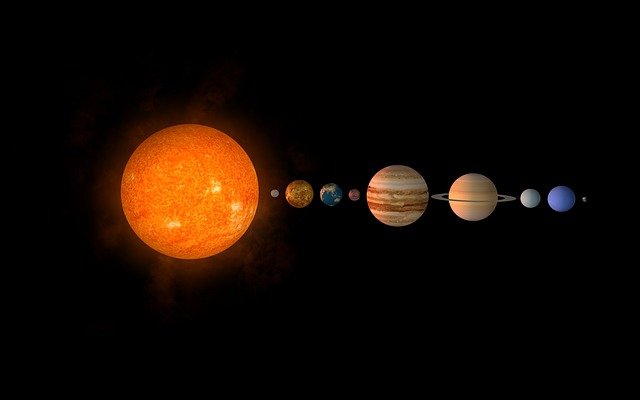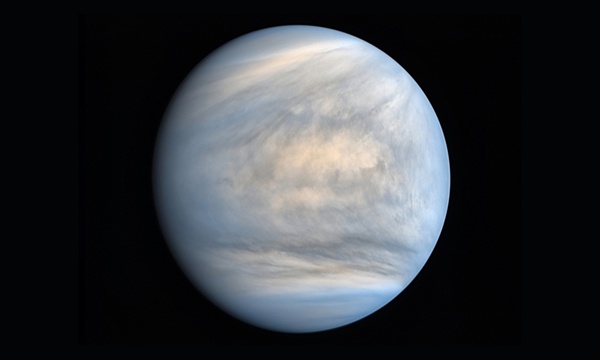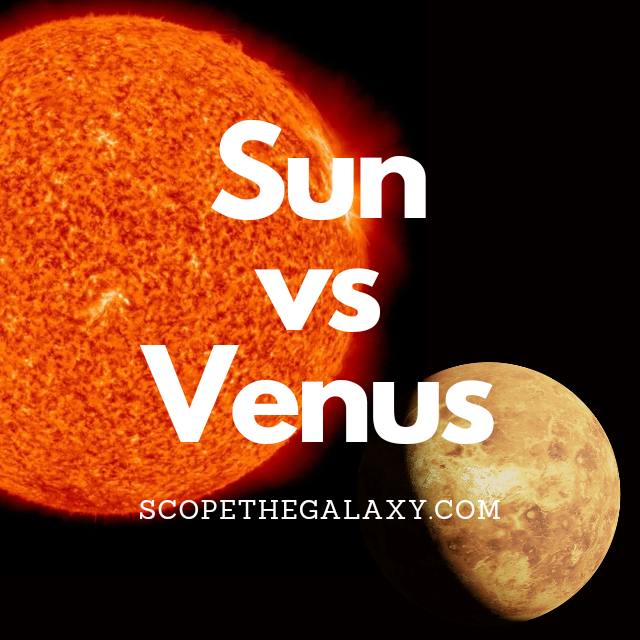*This post may contain affiliate links. This means we may make a commission if you purchase an item using one of our links*
The main differences between the two is that the Sun is a yellow dwarf star whilst Venus is simply a terrestrial planet that orbits the Sun. As a result it is much smaller with a diameter of 12,104km compared to the Sun’s 1.39 million km, it cannot produce light and energy via nuclear fusion like the Sun and Venus is not as bright even if it is the brightest planet in our solar system.
Besides these differences, there are numerous others that aren’t quite as obvious so, continue reading if you’re after a more thorough breakdown of the differences and even the odd few similarities between these celestial bodies.
What Is The Sun?
Table of Contents

The Sun is the bright, celestial entity at the center of our solar system and is also a star that falls under the G type main sequence star bracket (also called a yellow dwarfs), all of which are medium sized stars that tend to be around 0.84 – 1.15 solar masses.
Our Sun is 1 solar mass, making it a medium sized medium star. It’s also on the brighter side for a yellow dwarf, the color that it emits is white as opposed to the slightly yellow that less luminous yellow dwarfs would be.
Of course we still see the Sun as yellow or even red on Earth but, the reason for this significant color shift is because our atmosphere scatters and breaks up the photons that reach us, ultimately changing the true color of the light rays from white to the yellow, orange or red we see in our day to day.
As it is a star, the Sun will actively convert the hydrogen elements at its core into helium, through a process called nuclear fusion.
Nuclear fusion is the reason why it generates light and produces the energy we receive, helping us power machinery, technology, grow crops so on and so forth.
The process of nuclear fusion also affects how hot our star burns, allowing the sun to hit temperatures around 6000°C on a daily basis. This will be the case for another 4.5 – 5 billion years until it’s unable to convert hydrogen into helium.
Once hydrogen cannot be converted, an imbalance between the inward and outward forces keeping the Sun together will occur, causing an imbalance which would result in our Sun bloating up many many times its current size.
When this happens it will enter its red giant phase, where it’ll be around 256 times larger than it is now.
This phase will last for around a billion years until it sheds it mass through a process called planetary nebula, leaving behind only a dead white dwarf remnant.
What Is The Planet Venus?

Venus is the 2nd closest planet to the Sun and is often regarded as Earth’s sister planet. It’s very close to our Earth in size where its diameter is 12,104km. This is just over 600km less wide than our home planet.
Unlike all the planets further outside the Sun’s orbit, Venus and even mercury have no moons orbiting it. The most probable reason for this is due to its closer proximity to it, which means that smaller objects orbit the Sun as opposed to Venus.
Venus is also the hottest planet in our solar system where its surface temperature is 475 degrees Celsius. This is due to a number of factors, like the thicker atmosphere, close proximity to Sun, the reasons for which have been explained in more detail here.
It’s core is hot too, similar to that of the ice giants and Earth, where it stands at 5,200 degrees Celsius.
As a result of this thicker atmosphere, Venus is also able to reflect a lot more of the light the Sun projects at it, making it both the hottest and brightness planet in our solar system. This is why for the longest time, and even till this day Venus is often referred to as the morning or evening star.
The thicker atmosphere is mostly compromised of carbon dioxide, and thick clouds of sulfuric acid. This does result sulfuric acid rain on the planets surface, which of course is very corrosive.
Being so close to the Sun also mean its orbital cycle is much shorter. It takes Venus 225 days to complete a full cycle, on the contrary a single day is actually longer than this where it takes around 243 days for a full rotation around its axis.
This is partially down to its distance from the Sun and the thick atmosphere surrounding this terrestrial planet. The axial tilt on Venus is also different from the other planets in our solar system where it is practically straight at 3 degrees.
All in all this is certainly one of the most interesting planets in our solar system and in many peoples eyes, could very well have supported life in the past based on how close its shape and size is to that of Earth.
Similarities Between The Sun And Venus
The Sun and Venus don’t have too much in common but, still do share the odd few. Some of these commonalities include their spherical shape, the fact both have much hotter cores, and both are part of the same solar system.
Other than these relatively minor common features, the Sun and Venus are very different entities.
Differences Between The Sun And Venus
In regards to the differences between the two, they include the following:
- Venus orbits the Sun whilst the Sun does not orbit anything around it.
- The Sun goes through nuclear fusion at its center, where it converts hydrogen to helium whilst Venus cannot do this.
- Venus is far smaller than the Sun with a diameter of 12,104km in comparison to the Sun’s 1.39 million km diameter.
- Although Venus is the hottest planet in our solar system with a surface temperature of 475 degrees Celsius, the Sun is what allows it to burn this hot so, naturally it is much hotter with an average temperature of 6,000 degrees Celsius.
- Venus’ core is much cooler too at 5,200 degrees whereas the Sun’s core is an estimated 15 million degrees Celsius.
- The Sun is white in color whilst whilst Venus is yellowy white.
- Venus is the brightest planet in our solar system but the Sun is many magnitudes brighter still.
- The Sun’s magnetic field and gravitational field strength is far stronger than that of Venus.
- Venus is the brightest planet in our solar system but, the Sun is the brightest entity by far.
- Venus has no objects orbiting it whilst the Sun has our entire solar system orbiting it.
- The Sun has an axial tilt of 7 degrees whilst Venus has an axial tilt of 3 degrees.
- The Sun is a yellow dwarf star whereas Venus is a terrestrial planet.
- The Sun will eventually die and become a white dwarf, whereas Venus is likely to get caught up in the Sun’s red giant expansion phase and potentially cease to be as a result.
Summary
Venus is one of many planets that orbit the Sun, which of course is the only celestial being of its type in our solar system. It’s an extremely bright yellow dwarf star and Venus is simply a terrestrial planet.
Although both have some similarities, as a whole they fall under completely different celestial brackets and in turn differ significantly.

